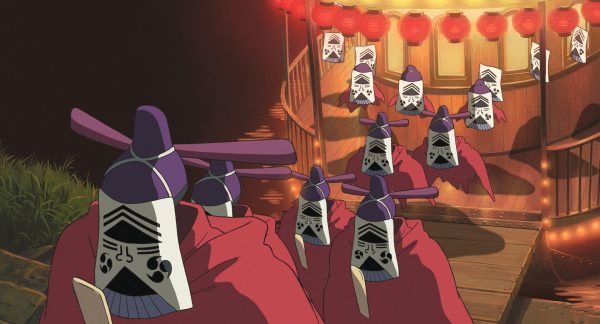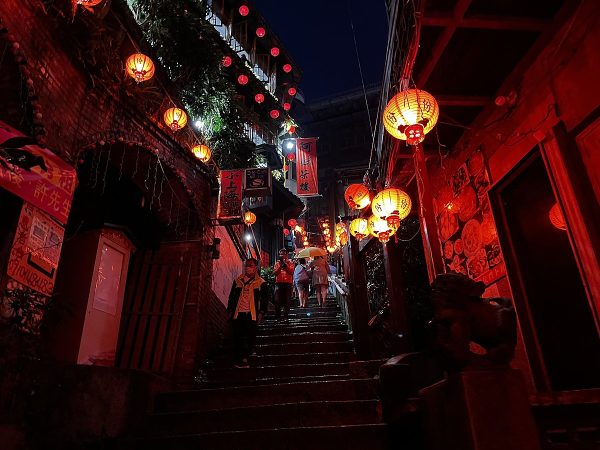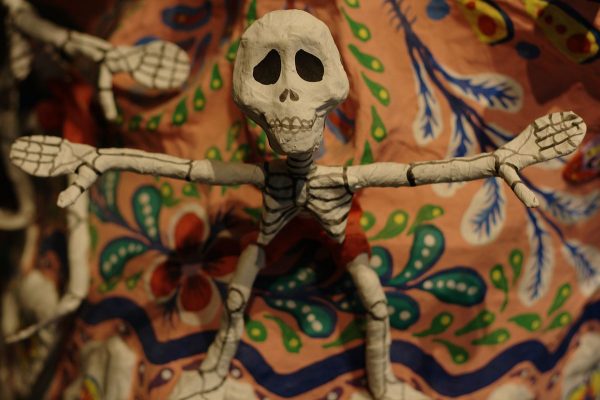As the haunting spirit of the Halloween season creeps upon us, we invite the scariest of monsters, beasts, and ghouls onto our television screens to satisfy our desire for suspense.
Ever since the emergence of the first horror movie in the 1890s, the genre has remained popular for the addictive adrenaline rush it grants its viewers. Therefore, it’s no wonder why horror movies have been consistently earning high rankings on the box-office’s highest-grossing films list.
Whether it’s a classic horror movie that has defined Halloween culture for decades or a more modern film with an approach that delves into psychological horror, characters in famous horror movie share a common bond in that they draw viewers back to the big screen every Halloween.
Horror franchises such as Insidious have grossed over $730 million worldwide. The most recent film in the franchise, Insidious: The Red Door, was released earlier this year and generated $188 million.
“My go-to Halloween movie is Insidious. One of my favorite things about it is the atmosphere created throughout the movie. The lighting in every scene makes it clear that it’s a horror movie, the music is frightening and always keeps you on edge, and it does a wonderful job of employing effective jump scares,” said Mahia Rahman ’24.
Similar films under the horror genre like It and The Exorcist grossed even higher numbers at the box office, with It making over $701 million and The Exorcist over $441 million.
Despite the popularity of horror movies, there are also numerous films that explore the more whimsical and fantastical aspect of the holiday, effectively captivating viewers and embracing the essence of the holiday.
Spirited Away
Hayao Miyazaki’s 2001 film Spirited Away, for instance, is rich with allusions to Japanese folklore and the Shinto Religion. The main character Chihiro is a young girl who becomes trapped in the spirit world, an otherworldly realm that contrasts with the human world in modern day Japan, where she must work at a bathhouse for gods, spirits, and other supernatural entities, under the evil witch Yubaba.
“I really enjoy the animation and art style of Spirited Away and because the characters are spirits, it makes the movie feel really imaginative and like Halloween,” said Kara Chow ’24.
Indeed, the presence of ghosts, spirits, and other supernatural entities in popular Halloween media reflects the earliest beliefs surrounding the holiday, namely the Celtic belief that ghosts and spirits would return to Earth on the night of October 31st.
The bathhouse in which Chihiro works was inspired by the Japanese tradition of using onsen, hot springs, to heal and to purify. The Dogo Onsen, the onsen that most directly inspired the bathhouse in Spirited Away, was believed to have healed one of Japan’s main deities in ancient times.

Photo credit: Gregg Tavares from Stanton, California, CC BY 2.0 <https://creativecommons.org/licenses/by/2.0>, via Wikimedia Commons
Additionally, as the audience views the procession of kami, Japanese deities and spirits, heading towards the mysterious bathhouse in one of the most visually striking scenes of the film, we see spirits of various designs, akin to something you might see at a Halloween parade in New York City.
One group of the bathhouse’s customers that appear in the procession, The Onama-Sama, are spirits adorning leafy green capes, horns, and long fangs. These creatures are inspired by the Namahage tradition in Akita, where men will dress up in straw capes and large masks to threaten misbehaving children. The Namahage tradition parallels the western Halloween practice of wearing menacing costumes, a concept stemming from the belief that doing so would ward off any roaming spirits.

Another aspect of the film that was influenced by Japanese Halloween folklore is the main villain, Yubaba. The formidable witch that runs the bathhouse, Yubaba was inspired by the Japanese ghost story of Yamamba, witches that inhabit Japanese mountains who lure travelers and eat them.
Apart from the clear nods to eerie Japanese folktales, the film establishes a Halloween aura through its animation style and color scheme.
The dark night sky behind the soft glow of the orange reddish lanterns that embellish the spirit world is certainly reminiscent of the ambience in our own neighborhoods during Halloween.
“The presence of the color red in the movie reminds me of fall and Halloween,” said Chow.

Photo credit: Sunkenbean, CC BY-SA 4.0 <https://creativecommons.org/licenses/by-sa/4.0>, via Wikimedia Commons
Corpse Bride
While Miyazaki chose to integrate aspects of eerie Japanese folklore in Spirited Away, director Tim Burton utilizes distinct methods, puppets and stop motion animation, to encapsulate the dark yet whimsical allure of Halloween in his 2005 film Corpse Bride.
Stop motion animation is a popular filmmaking technique that involves physically moving objects in between each individual frame. When all the frames of a stop motion production are compiled together, the result is an illusion of movement. Animator Henry Selick, who has produced several iconic Halloween films including Coraline and The Nightmare Before Christmas, is also known for using clay figures to create the iconic characters Coraline and Jack skellington.
The use of clay in stop motion animation allows for greater detail and texture to be shown in each frame, something that 3D animation leaves out. Stop motion generates a generally unsettling and eerie feeling, as the movement of these puppets are physically moved by the production team, leading to a choppy flow of the production compared to a smooth animation achieved by a computer which can add to the disturbing feeling the filmmaker is trying to provoke.
A total of 300 puppets made of silicone and foam were created for the film, each having mechanisms for joint movement and independently operated facial features. The puppets’ unusual proportions and exaggerated features of the characters contribute to the film’s surrealistic feel. This process allows for a film that is lighthearted and whimsical yet still maintains the sense of uneasiness that people look for in scary movies.
The film Corpse Bride, while overall light hearted and whimsical, takes place in a fictional Victorian era village in England, which certainly plays a significant role in the film’s unsettling and somber ambiance.
The Victorian Era has been a popular setting for numerous horror films in the past year and it’s no wonder why. With everything from filthy air being released by industrial factories to the occasional outbreak of tuberculosis and typhoid, the Victorian Era is one characterized by death and gloom.

Photo credit: Esparta Palma from Ciudad de Mexico, Distrito Federal, Mexico, CC BY 2.0 <https://creativecommons.org/licenses/by/2.0>, via Wikimedia Commons
In stark contrast to the land of the living, however, the land of the dead in Corpse Bride exhibits distinct characteristics that resemble the Day of the Dead, a holiday that is similar to the American holiday of Halloween. Compared to the dreary Victorian Era existence that the living characters of the movie are subject to, The land of the dead radiates vibrancy and is full of eccentric characters who appreciate creativity and self-expression, which is shown through their love for music and various art forms.
The film’s focus on the afterlife and its positive spin on death make it a classic Halloween movie. Halloween, at its core, is a holiday meant to celebrate the dead and invite the intersection of the world of the living and the world of the dead.
Despite horror movies often being placed in the spotlight during Halloween, films like Spirited Away and Corpse Bride highlight the fantastical and imaginative spirit that is just as integral to Halloween culture as any horror movie.
Despite the popularity of horror movies, there are also numerous films that explore the more whimsical and fantastical aspect of the holiday, effectively captivating viewers and embracing the essence of the holiday.
